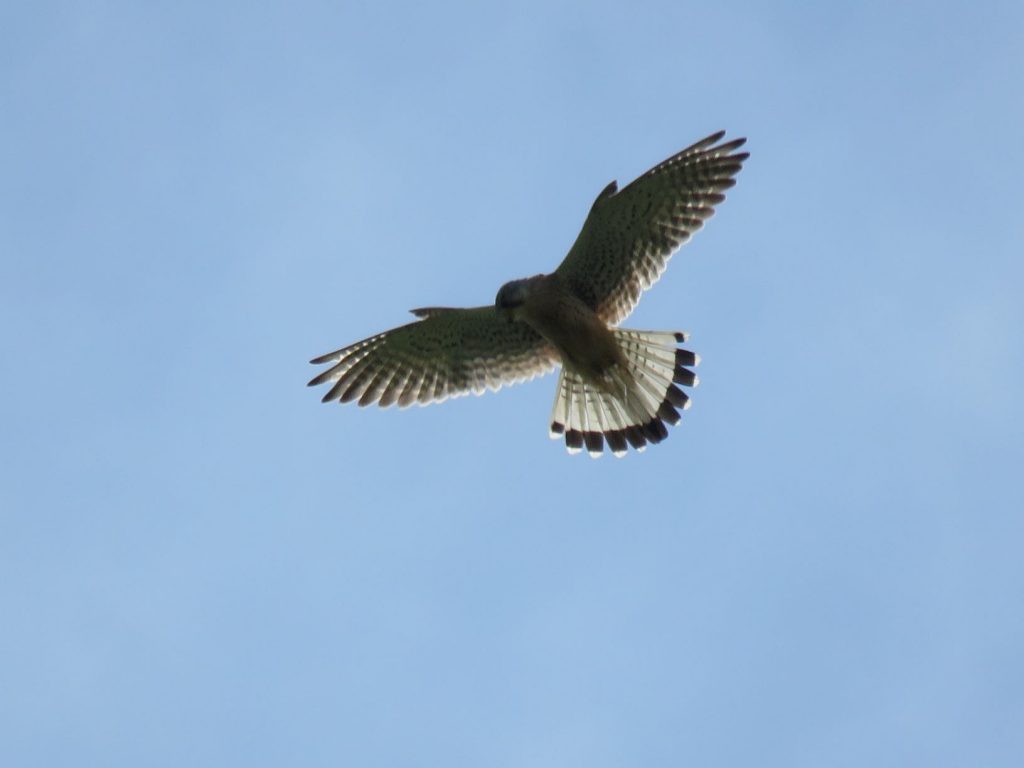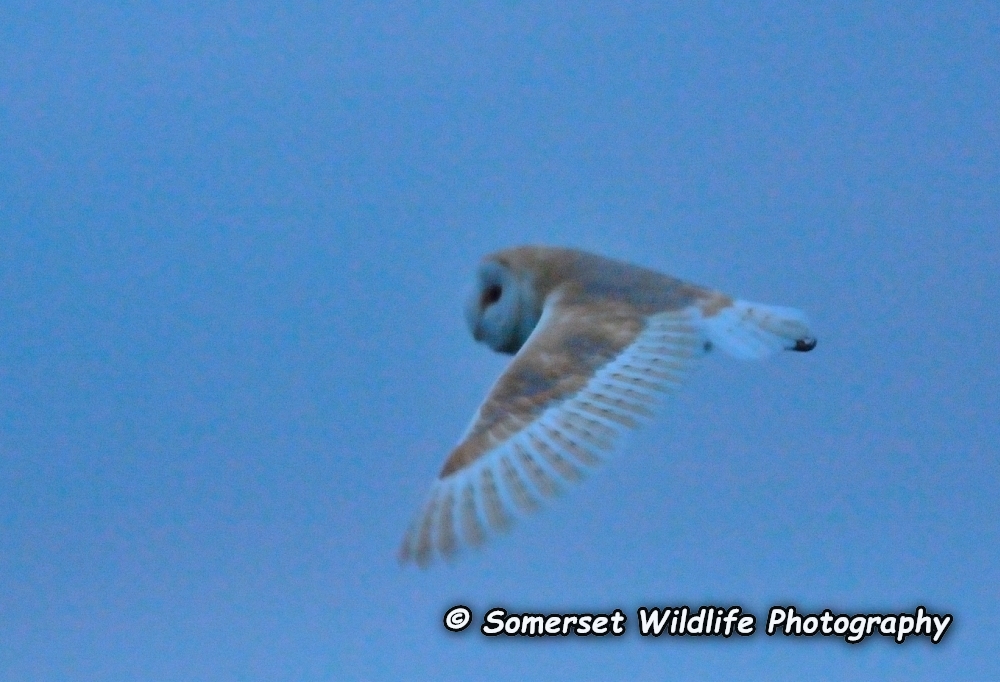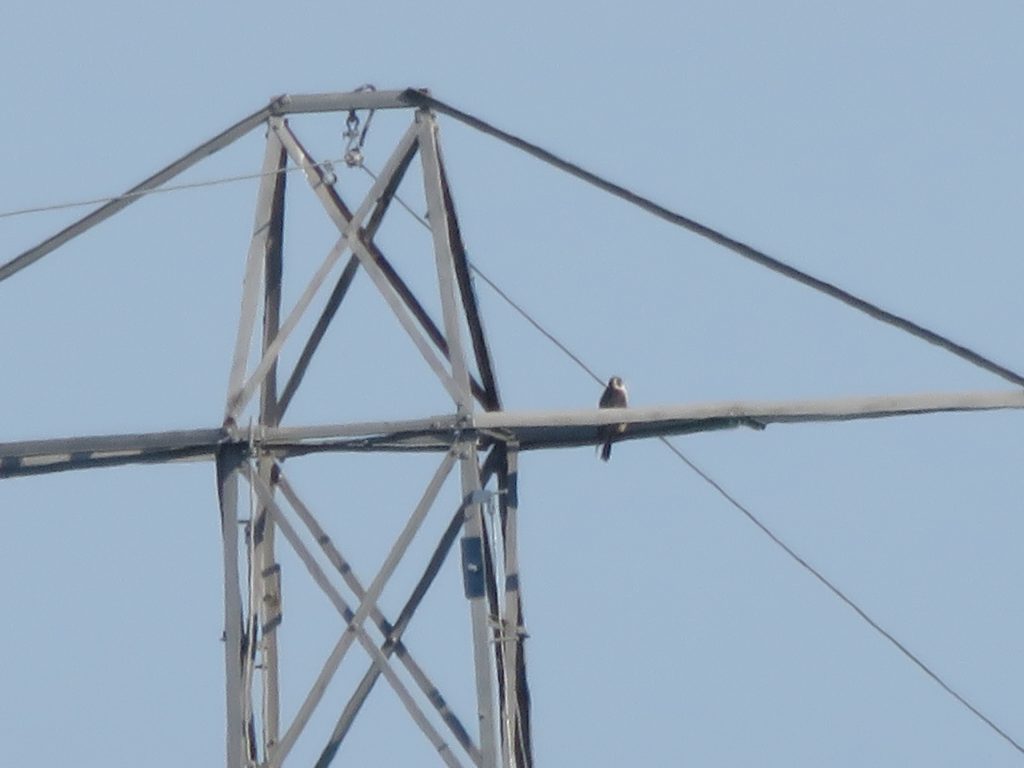Kestrels, Barn Owls and Peregrines
- 11 July 2021
-
 Trevor Riddle
Trevor Riddle
- Birds
In the 1970’s and 80’s Kestrels were the most common bird of prey in the UK, indeed the other 13 breeding species together could not reach half of the then 80,000 pairs of Kestrels. Persecution and pesticides had affected Kestrels less than Buzzards and Sparrowhawks. The rest of the diurnal raptor species were extremely rare.

Kestrels feed largely on small mammals and hunt mostly by hovering over an area of rough grassland using their excellent eyesight to spot prey. It is thought that they can even see voles urine trails in ultra violet light. The construction of motorways soon provided large areas of pesticide free grassland which proved ideal hunting habitat. In fact one petrol company produced a glossy leaflet all about spotting Kestrels from a car, authored by Bill Oddie and available free at petrol stations. Kestrels were doing pretty well.
In the same period Barn Owl numbers had fallen partly due to loss of habitat, partly due to changed (and less wasteful agricultural practices) but perhaps mostly due to loss of nesting sites. As it’s name implies, Barn Owls nested in farm barns but these were being modernised or converted into dwellings. Incidentally it has been said that a Barn Owl could live all winter in a hay barn without going outside as there were so many mice and rats!

Barn Owls feed on much the same prey as Kestrels but as Owls hunt by night and Kestrels by day competition is avoided. Field voles increase dramatically in numbers in some years and Barn Owls breed prolifically but perhaps not at all when vole numbers were low. Kestrels had a more even breeding cycle but produced more young when there were lots of voles.
The erection of Barn Owl nest boxes helped to arrest the decline in Barn Owl numbers and now two thirds of our Barn Owls nest in man-made boxes. These boxes are also used by Kestrels but not to the same extent.
The grass banks of the motorways turned into trees and scrub, more rough grassland was improved and Kestrel numbers are now not much more than half of the 1980 figure. Barn Owls seem to have suffered from reduced prey availability in recent years and their numbers are now thought to be declining.
However, as is pretty obvious Buzzards have increased their numbers dramatically. They also feed on small mammals but they are generalist predators and will eat birds, road kill, amphians and worms, pretty much anything. They do occasionally predate hunting Barn Owls too. So they have probably out competed some Kestrels and Barn Owls.

Peregrine Falcons were reduced to very low numbers following the pesticides saga and there were real concerns that they may become extinct in the UK. Gradually they recovered and now they are positively thriving. Locally humans have excavated and then abandoned stone quarries with vertical faces – ideal nesting sites. As for prey, almost any bird will do, there are huge numbers of Pigeons and Jackdaws available for starters. They do also predate Barn Owls and Kestrels but this is a rare occurrence. Peregrines are also taking to urban areas and a bird has been seen perched on Yatton church. Is this an omen of future nesting there – it might reduce the numbers of Jackdaws a little!
Both YACWAG and NEWT (Nailsea Environment and Wildlife Trust) had broods of Kestrels and Barn Owls on their Reserves this year, a testament of good provision of vole friendly habitat.
For more on our local birds view the main YACWAG birds page or pick up a copy of Brilliant Birds of Yatton & Congresbury (full details in our Shop)
© Copyright YACWAG, or original authors. All rights reserved. | Registered charity 1076362 | Privacy policy | Cookie policy | Terms & Conditions |Web design: StanfordGraphics


